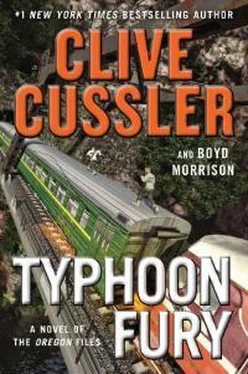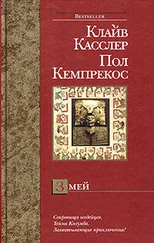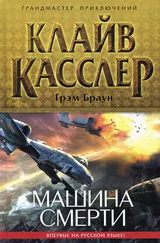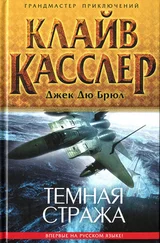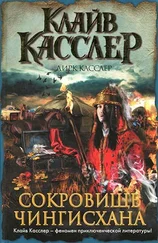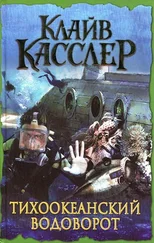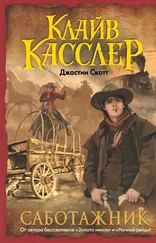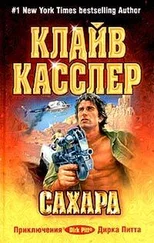He shared an amused glance with Max.
“You may be well connected,” Juan said with a sly grin, “but apparently you haven’t heard about the Oregon .”
16
THE UNITED STATES
Jet engines screamed in the distance as the two A-10 Warthog pilots circled their target above Dugway Proving Ground eighty miles west of Salt Lake City. On the main screen inside the mobile command post, Greg Polten watched twelve pigs shuffle around in a pen five miles away, spooked by the din made by the lurking attack planes. Despite the air-conditioning unit pumping out a chilling draft, he continually wiped his sweaty palms on his pants. The future of his career rode on the success of this test. If his serum worked, the pigs would remain spooked but healthy. If it didn’t, the animals would be dead in minutes.
As large as the state of Rhode Island, Dugway was the main testing site for American chemical and biological defensive systems. Like most of the employees at the top secret facility, Polten was a civilian contractor instead of a military service member. But today, in addition to Polten’s small staff, the command post was filled with Army officers observing the classified test.
Syrian chemical weapons were a major threat to U.S. soldiers fighting in the Middle East against ISIS and other terrorist organizations. Donning bulky chemical protective suits significantly hampered soldiers’ fighting ability, so efforts had been made in recent years to develop a serum that would ward off the effects of chemical weapons like sarin and VX nerve gas if soldiers were caught in the field without their gear.
A trim man in his forties, with graying hair at his temples and frameless glasses perched on his nose, Polten had staked his career on developing the Panaxim serum, but years of experiments and tens of millions of tax dollars had yielded nothing usable. His classified program was in danger of being cancelled if he didn’t produce results soon, and this demo was his best chance to show what the serum could do. Lab tests had shown some promise, but the field trial was the ultimate chance to show whether soldiers in battle would be protected.
The air outside was calm, which would not only concentrate the effects of the gas near the pigpen but would also mean that the gas would dissipate before it could reach the edge of the range. In 1968, a test of VX nerve gas had released a cloud much larger than anticipated on a windy day and it had drifted over huge flocks of sheep on surrounding ranches. The Army never admitted liability but paid the ranchers for the loss of more than six thousand sheep. Since then, airburst releases of chemical weapons at Dugway had been carefully controlled and monitored.
General Amos Jefferson, who had been conferring with his aide, startled Polten when his gruff voice boomed out, “Mr. Polten, how long until we see the effects of the gas on the pigs?”
Jefferson, a stout veteran of both the Iraq and Afghanistan wars, was in charge of Polten’s funding. If he wasn’t satisfied with the results of the test, the money would dry up. Polten hated the fact that he had to suck up to the military. He thought it should be the other way around.
“General,” he said, crossing his arms to mask his nervousness, “you shouldn’t see any effects of the gas. That’s the point of this test.”
Jefferson turned and narrowed his eyes, as if that was supposed to intimidate Polten. “I know that, Mr. Polten. That’s why you’ve been draining huge amounts of money out of my budget for years now. My soldiers are depending on your success. So let me rephrase the question. When will we know if this Panaxim serum works?”
Polten returned the stare with equal force. “A single pig, marked by a large red A on its side, will be our control. Since it won’t be injected with the serum, it should die within two minutes of exposure. If the other pigs haven’t shown any effects by that time, we can assume they’ll be fine.”
“How are you injecting the Panaxim?” the general asked as he peered at the screen. “I don’t see anyone out there.”
Polten rolled his eyes. Obviously, Jefferson hadn’t read his briefing kit thoroughly.
“If you look closely, you can see that each pig is wearing a collar. When the gas cloud reaches them, I will activate a remote injector embedded in the collar, which will deliver a dose of the serum. It’s similar to the auto-injectors we supply to soldiers in the field.”
“Will they show any effects at all? If this doesn’t work better than atropine, it won’t be any good to us.”
So the general had done at least some of the homework. Atropine was the most effective antidote for nerve gas exposure on the battlefield. It prevented death and minimized the degradation of essential bodily functions, but it didn’t counteract the loss of muscle control brought on by the chemical weapon, which could leave the soldiers vulnerable to attack for a significant length of time.
“Of course, we’ll analyze the pigs by necropsy after exposure to determine the full effects,” Polten said, “but we shouldn’t see any overt symptoms on camera.”
A Humvee approached from the direction of the target and pulled up next to the command post. Charles Davis, Polten’s chief chemist on the project, jumped out of the driver’s seat and ran inside. A heavyset, balding man with a messy beard, Davis was panting as he launched himself through the door.
“Everything is set,” he said and plopped himself into a chair. “I double-checked all the injectors on the pigs and they’re ready to go.” Davis tapped on his laptop keyboard, and Polten could see that the status of each injector had a nominal reading. With one press of a button, the Panaxim would be injected into all eleven pigs simultaneously.
Polten looked at Jefferson. “General, you can tell the pilots to begin their attack run.”
The general nodded to his aide, who told the communications officer to radio the pilots. “Tango One and Two, this is Sierra Base. You have a green light. Cleared to start the attack sequence.”
“Acknowledged, Sierra Base. Tango One and Two beginning our run.”
Polten picked up a pair of binoculars and focused them on the Warthogs wheeling over the mountains. They plunged down to a thousand feet and rocketed over the desert floor. When they were within a thousand yards of the pigpen, the jets released two bombs each. Then the pilots yanked their sticks up, and the A-10s shot skyward.
The bombs detonated on the ground without the usual fireball, which would have consumed the gas encased inside the shells. Instead, they blew apart in a cloud of smoke and mist that immediately began drifting toward the pigs, now climbing over each other in a frenzy because of the explosions.
The chemical warheads had been seeded with red powder so that the cloud could be tracked more easily. The scarlet mist lazily drifted toward the pen. When it reached the first pig, Polten instructed Davis to activate the injectors.
Davis tapped a key. “Injectors firing.” After a pause, he said, “All eleven injections have succeeded.”
Now all they could do was wait. Polten felt a bead of perspiration trickle down his brow as he watched the screen while keeping an eye on the clock. He had Davis turn up the audio feed, and the squeals of the pigs filled the room.
The pig marked with the A collapsed within seconds. It shuddered on the ground before going still. None of the other pigs exhibited any signs of distress beyond their fright from the jets and bombs. They shuffled around the pen as they normally did, futilely rooting in the dirt for food.
The timer seemed to move agonizingly slow. When it reached two minutes, Polten exchanged a triumphant glance with Davis. He looked at General Jefferson, who nodded at the screen in appreciation before turning to Polten.
Читать дальше
